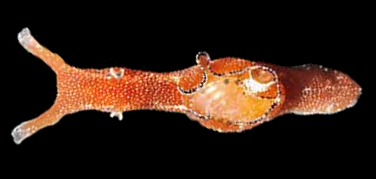|
Aplysia Kurodai
''Aplysia kurodai'' is a species of gastropods belonging to the family Aplysiidae Aplysiidae is the only family in the superfamily Aplysioidea, within the clade Anaspidea. These animals are commonly called sea hares because, unlike most sea slugs, they are often quite large, and when they are underwater, their rounded body sh .... The species is found in Japan and Southeastern Asia. References kurodai Gastropods of Asia Gastropods described in 1937 {{Aplysiidae-stub ... [...More Info...] [...Related Items...] OR: [Wikipedia] [Google] [Baidu] |
Gastropods
The gastropods (), commonly known as snails and slugs, belong to a large taxonomic class of invertebrates within the phylum Mollusca called Gastropoda (). This class comprises snails and slugs from saltwater, from freshwater, and from land. There are many thousands of species of sea snails and slugs, as well as freshwater snails, freshwater limpets, and land snails and slugs. The class Gastropoda contains a vast total of named species, second only to the insects in overall number. The fossil history of this class goes back to the Late Cambrian. , 721 families of gastropods are known, of which 245 are extinct and appear only in the fossil record, while 476 are currently extant with or without a fossil record. Gastropoda (previously known as univalves and sometimes spelled "Gasteropoda") are a major part of the phylum Mollusca, and are the most highly diversified class in the phylum, with 65,000 to 80,000 living snail and slug species. The anatomy, behavior, feeding, and reproduc ... [...More Info...] [...Related Items...] OR: [Wikipedia] [Google] [Baidu] |
Aplysiidae
Aplysiidae is the only family in the superfamily Aplysioidea, within the clade Anaspidea. These animals are commonly called sea hares because, unlike most sea slugs, they are often quite large, and when they are underwater, their rounded body shape and the long rhinophores on their heads mean that their overall shape resembles that of a sitting rabbit or hare. Sea hares are however sea snails with shells reduced to a small plate hidden between the parapodia, and some species are extremely large. The Californian black sea hare, ''Aplysia vaccaria'' is arguably the largest living gastropod species, and is certainly the largest living heterobranch gastropod. Description Members of the Aplysiidae have an atrophied inner shell (in contrast with the nudibranchs, which have no shell at all). In ''Aplysia'' and ''Syphonota'', this shell is a soft flattened plate over the visceral rear end, where it is fully or partially enclosed in the mantle skin. In ''Dolabella auricularia'', t ... [...More Info...] [...Related Items...] OR: [Wikipedia] [Google] [Baidu] |
Aplysia
''Aplysia'' () is a genus of medium-sized to extremely large sea slugs, specifically sea hares, which are one clade of large sea slugs, marine gastropod mollusks. These benthic herbivorous creatures can become rather large compared with most other mollusks. They graze in tidal and subtidal zones of tropical waters, mostly in the Indo-Pacific Ocean (23 species); but they can also be found in the Atlantic Ocean (12 species), with a few species occurring in the Mediterranean. ''Aplysia'' species, when threatened, frequently release clouds of ink, it is believed in order to blind the attacker (though they are in fact considered edible by relatively few species). Following the lead of Eric R. Kandel, the genus has been studied as a model organism by neurobiologists, because its gill and siphon withdrawal reflex, as studied in ''Aplysia californica'', is mediated by electrical synapses, which allow several neurons to fire synchronously. This quick neural response is necessary f ... [...More Info...] [...Related Items...] OR: [Wikipedia] [Google] [Baidu] |
Gastropods Of Asia
The gastropods (), commonly known as snails and slugs, belong to a large taxonomic class of invertebrates within the phylum Mollusca called Gastropoda (). This class comprises snails and slugs from saltwater, from freshwater, and from land. There are many thousands of species of sea snails and slugs, as well as freshwater snails, freshwater limpets, and land snails and slugs. The class Gastropoda contains a vast total of named species, second only to the insects in overall number. The fossil history of this class goes back to the Late Cambrian. , 721 families of gastropods are known, of which 245 are extinct and appear only in the fossil record, while 476 are currently extant with or without a fossil record. Gastropoda (previously known as univalves and sometimes spelled "Gasteropoda") are a major part of the phylum Mollusca, and are the most highly diversified class in the phylum, with 65,000 to 80,000 living snail and slug species. The anatomy, behavior, feeding, a ... [...More Info...] [...Related Items...] OR: [Wikipedia] [Google] [Baidu] |


